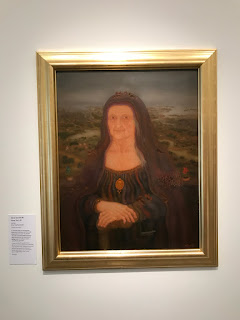Our
last full day in Salzburg and so I would like to summarise....
Giving
points out of ten for how they handle different challenges:
Litter
10/10 The place is immaculate
Cigarette
smoke 6/10 Hard to avoid people's blow-overs. Lots of it
Dog
poo 10/10 None to be seen
Charity
shops ? None to be seen
Art 8/10 Loads of exhibitions, most of which you must pay to see
Street Art 10/10 Lots of it, amusing, unexpected, good
Ease
of getting around 7/10 You must wait for a signal to cross the road
Architecture 10/10 Interesting,
well kept, varied
Repairs to the civic structure 10/10 Inconvenient in places but they CARE!
Churches 5/10 Heavyweight, not necessarily v spiritual at all. Dead hand...
Bank
machines 7/10 Liable to charge for giving you money
Beggars 6/10 Many many people begging on the street
Trains 10/10 Clean, quiet, modern, comfortable, well used, frequent
Chattiness 8/10 Most
people speak English, friendly
Signage 7/10 Sometimes just peters out when you need it
Price 6/10 Quite
pricey for necessities.
Pleasure
of being here 10/10 Brilliant place for us, at any rate
Today
was our last day, sunny, almost too warm for our clothing.
 |
| Hand-made bread in the market. Looked delicious. We actually bought wild garlic freshly picked a little later on. Delicious. |
We loved
the street market by the Kollegienkirche, and that church was truly
wonderful … painted white all round inside, huge, expensively restored,
empty of fittings but full of spirituality, loved it.
Amazingly, it has the same basic layout as Newgrange in Ireland.. the entry tunnel (nave), the three spaces at the end, the huge dome over the end.... But my goodness, it's come on a long way. It struck me, the most valuable thing in this valley town is flat land, and the huge number of huge churches bagged almost all of it......
We
stroked the noses of the fiacre horses waiting patiently near the
Dom.
We
went up in the funicular to the fortress – so fast!!!! Breezy at
the top, the coffee on the terrace was very good, so we ordered lunch
and loved being there.
Strolling round most of the interior was
fun... the whole experience is well presented, not too religious, not
too military, wonderful rooms and staircases and ceilings and
displays. Well worth it (though we did not pay the extra to see the
theatre and the Georgian rooms). It's like a whole town up there.
We
wandered back to our side of the river, regrouped.... Succumbed to the pleasures of an icecream, which is another speciality it seems.
Walked up what
seemed like 50,000 steps to a nice viewing point...
Altogether
I made 4 drawings and paintings today, which was a pleasure.
Came
back without finding a place for a nifty clubbin' drink, but made
supper from left-overs and now packing to leave in the morning. We only walked about 4 miles today but that included walking up the equivalent of 22 floors - seems like more.
The
main impression I have of Salzburg is how proud it is, how well
polished, how clean and tidy. It has a proper spirit! Quite a
contrast with Britain right now.


























































